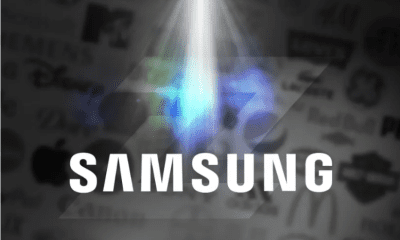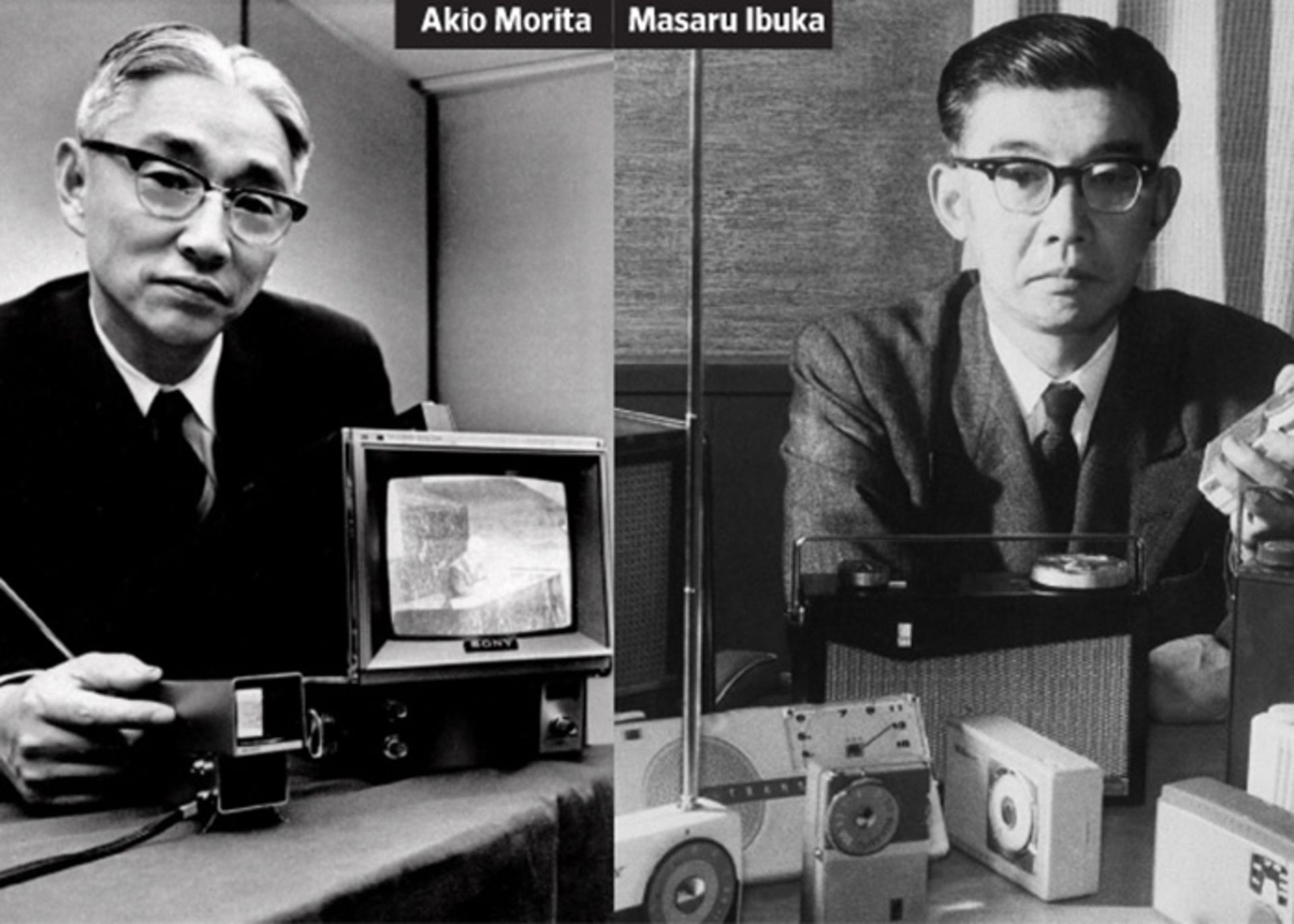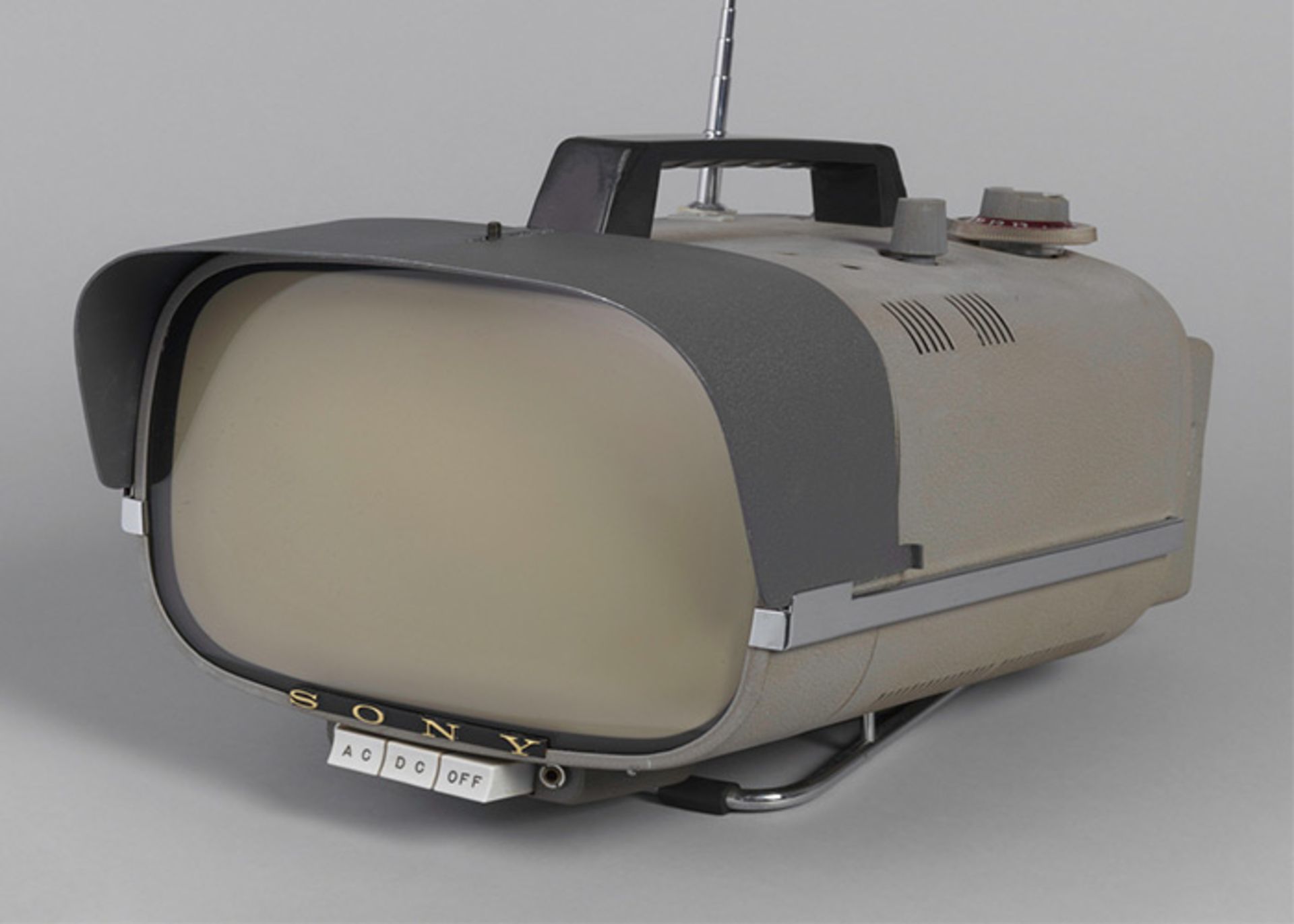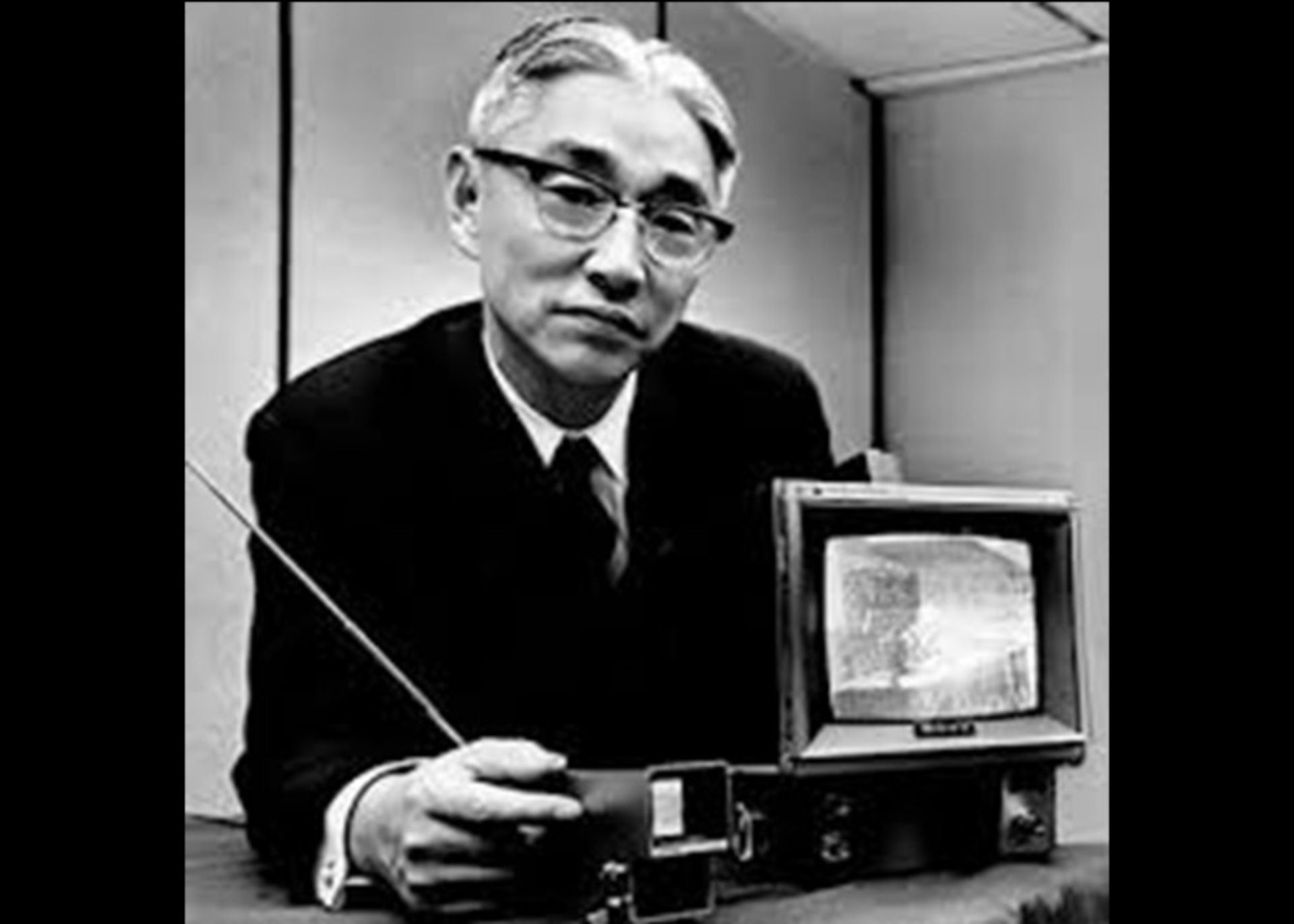Technology
Uber brand story; A journey from dangerous roads to success
Published
2 months agoon


Noun: A piece of burning wood or peat, or a glowing cinder.
Noun: A torch used for signaling.
Noun: A sword.
Noun: A mark or scar made by burning with a hot iron, especially to mark cattle or to classify the contents of a cask.
Noun: A branding iron.
Noun: The symbolic identity, represented by a name and/or a logo, which indicates a certain product or service to the public.
Noun: A specific product, service, or provider so distinguished.
Noun: Any specific type or variety of something; a distinct style or manner.
Noun: The public image or reputation and recognized, typical style of an individual or group.
Noun: A mark of infamy; stigma.
Noun: Any minute fungus producing a burnt appearance in plants.
Verb: To burn the flesh with a hot iron, either as a marker (for criminals, slaves etc.) or to cauterise a wound.
Verb: To mark (especially cattle) with a brand as proof of ownership.
Verb: To make an indelible impression on the memory or senses.
Verb: To stigmatize, label (someone).
Verb: To associate a product or service with a trademark or other name and related images.
Verb: To be very hot, to burn.
emergenceNoun: The act of rise out of a fluid, or coming forth from envelopment or concealment, or of rising into view; sudden uprising or appearance.
Noun: In particular: the arising of emergent structure in complex systems.
Noun: An emergency.
Noun: An account of real or fictional events.
Noun: A lie, fiction.
Noun: A soap opera.
Noun: history.
Noun: A sequence of events, or a situation, such as might be related in an account.
Noun: A chronological collection of pictures or short videos published by a user on an application or website that is typically only available for a short period.
Verb: To tell as a story; to relate or narrate about.
Verb: on an application or website.
Interjection: short for ?
Noun: An account of real or fictional events.
Noun: A lie, fiction.
Noun: A soap opera.
Noun: history.
Noun: A sequence of events, or a situation, such as might be related in an account.
Noun: A chronological collection of pictures or short videos published by a user on an application or website that is typically only available for a short period.
Verb: To tell as a story; to relate or narrate about.
Verb: on an application or website.
Interjection: short for ?
Noun: An account of real or fictional events.
Noun: A lie, fiction.
Noun: A soap opera.
Noun: history.
Noun: A sequence of events, or a situation, such as might be related in an account.
Noun: A chronological collection of pictures or short videos published by a user on an application or website that is typically only available for a short period.
Verb: To tell as a story; to relate or narrate about.
Verb: on an application or website.
Interjection: short for ?
Noun: An account of real or fictional events.
Noun: A lie, fiction.
Noun: A soap opera.
Noun: history.
Noun: A sequence of events, or a situation, such as might be related in an account.
Noun: A chronological collection of pictures or short videos published by a user on an application or website that is typically only available for a short period.
Verb: To tell as a story; to relate or narrate about.
Verb: on an application or website.
Interjection: short for ?
Noun: A conflagration; a flame.
Noun: A piece of burning wood or peat, or a glowing cinder.
Noun: A torch used for signaling.
Noun: A sword.
Noun: A mark or scar made by burning with a hot iron, especially to mark cattle or to classify the contents of a cask.
Noun: A branding iron.
Noun: The symbolic identity, represented by a name and/or a logo, which indicates a certain product or service to the public.
Noun: A specific product, service, or provider so distinguished.
Noun: Any specific type or variety of something; a distinct style or manner.
Noun: The public image or reputation and recognized, typical style of an individual or group.
Noun: A mark of infamy; stigma.
Noun: Any minute fungus producing a burnt appearance in plants.
Verb: To burn the flesh with a hot iron, either as a marker (for criminals, slaves etc.) or to cauterise a wound.
Verb: To mark (especially cattle) with a brand as proof of ownership.
Verb: To make an indelible impression on the memory or senses.
Verb: To stigmatize, label (someone).
Verb: To associate a product or service with a trademark or other name and related images.
Verb: To be very hot, to burn.
Noun: A conflagration; a flame.
Noun: A piece of burning wood or peat, or a glowing cinder.
Noun: A torch used for signaling.
Noun: A sword.
Noun: A mark or scar made by burning with a hot iron, especially to mark cattle or to classify the contents of a cask.
Noun: A branding iron.
Noun: The symbolic identity, represented by a name and/or a logo, which indicates a certain product or service to the public.
Noun: A specific product, service, or provider so distinguished.
Noun: Any specific type or variety of something; a distinct style or manner.
Noun: The public image or reputation and recognized, typical style of an individual or group.
Noun: A mark of infamy; stigma.
Noun: Any minute fungus producing a burnt appearance in plants.
Verb: To burn the flesh with a hot iron, either as a marker (for criminals, slaves etc.) or to cauterise a wound.
Verb: To mark (especially cattle) with a brand as proof of ownership.
Verb: To make an indelible impression on the memory or senses.
Verb: To stigmatize, label (someone).
Verb: To associate a product or service with a trademark or other name and related images.
Verb: To be very hot, to burn.
:Symbol: See
Particle: See .
Numeral: one
Conjunction: if
Conjunction: So long as.
Conjunction: As if; as though.
Noun: The first letter of the Georgian alphabet, (Nuskhuri).
Preposition: In each; to or for each; per.
Numeral: one
Conjunction: if
Conjunction: So long as.
Conjunction: As if; as though.
Noun: The first letter of the Georgian alphabet, (Nuskhuri).
Preposition: In each; to or for each; per.
Numeral: one
Conjunction: if
Conjunction: So long as.
Conjunction: As if; as though.
Noun: The first letter of the Georgian alphabet, (Nuskhuri).
Preposition: In each; to or for each; per.
Numeral: one
Conjunction: if
Conjunction: So long as.
Conjunction: As if; as though.
Noun: The first letter of the Georgian alphabet, (Nuskhuri).
Preposition: In each; to or for each; per.
Verb: ‘, chiefly in depictions of colloquial speech.
Symbol: ‘often’
Noun: The act of rise out of a fluid, or coming forth from envelopment or concealment, or of rising into view; sudden uprising or appearance.
Noun: In particular: the arising of emergent structure in complex systems.
Noun: An emergency.
Noun: An account of real or fictional events.
Noun: A lie, fiction.
Noun: A soap opera.
Noun: history.
Noun: A sequence of events, or a situation, such as might be related in an account.
Noun: A chronological collection of pictures or short videos published by a user on an application or website that is typically only available for a short period.
Verb: To tell as a story; to relate or narrate about.
Verb: on an application or website.
Interjection: short for ?
Noun: An account of real or fictional events.
Noun: A lie, fiction.
Noun: A soap opera.
Noun: history.
Noun: A sequence of events, or a situation, such as might be related in an account.
Noun: A chronological collection of pictures or short videos published by a user on an application or website that is typically only available for a short period.
Verb: To tell as a story; to relate or narrate about.
Verb: on an application or website.
Interjection: short for ?
Noun: An account of real or fictional events.
Noun: A lie, fiction.
Noun: A soap opera.
Noun: history.
Noun: A sequence of events, or a situation, such as might be related in an account.
Noun: A chronological collection of pictures or short videos published by a user on an application or website that is typically only available for a short period.
Verb: To tell as a story; to relate or narrate about.
Verb: on an application or website.
Interjection: short for ?
Noun: An account of real or fictional events.
Noun: A lie, fiction.
Noun: A soap opera.
Noun: history.
Noun: A sequence of events, or a situation, such as might be related in an account.
Noun: A chronological collection of pictures or short videos published by a user on an application or website that is typically only available for a short period.
Verb: To tell as a story; to relate or narrate about.
Verb: on an application or website.
Interjection: short for ?
Noun: A conflagration; a flame.
Noun: A piece of burning wood or peat, or a glowing cinder.
Noun: A torch used for signaling.
Noun: A sword.
Noun: A mark or scar made by burning with a hot iron, especially to mark cattle or to classify the contents of a cask.
Noun: A branding iron.
Noun: The symbolic identity, represented by a name and/or a logo, which indicates a certain product or service to the public.
Noun: A specific product, service, or provider so distinguished.
Noun: Any specific type or variety of something; a distinct style or manner.
Noun: The public image or reputation and recognized, typical style of an individual or group.
Noun: A mark of infamy; stigma.
Noun: Any minute fungus producing a burnt appearance in plants.
Verb: To burn the flesh with a hot iron, either as a marker (for criminals, slaves etc.) or to cauterise a wound.
Verb: To mark (especially cattle) with a brand as proof of ownership.
Verb: To make an indelible impression on the memory or senses.
Verb: To stigmatize, label (someone).
Verb: To associate a product or service with a trademark or other name and related images.
Verb: To be very hot, to burn.
Noun: A conflagration; a flame.
Noun: A piece of burning wood or peat, or a glowing cinder.
Noun: A torch used for signaling.
Noun: A sword.
Noun: A mark or scar made by burning with a hot iron, especially to mark cattle or to classify the contents of a cask.
Noun: A branding iron.
Noun: The symbolic identity, represented by a name and/or a logo, which indicates a certain product or service to the public.
Noun: A specific product, service, or provider so distinguished.
Noun: Any specific type or variety of something; a distinct style or manner.
Noun: The public image or reputation and recognized, typical style of an individual or group.
Noun: A mark of infamy; stigma.
Noun: Any minute fungus producing a burnt appearance in plants.
Verb: To burn the flesh with a hot iron, either as a marker (for criminals, slaves etc.) or to cauterise a wound.
Verb: To mark (especially cattle) with a brand as proof of ownership.
Verb: To make an indelible impression on the memory or senses.
Verb: To stigmatize, label (someone).
Verb: To associate a product or service with a trademark or other name and related images.
Verb: To be very hot, to burn.
Uber brand story; A journey from dangerous roads to success
Imagine 20 years ago, you are looking for a taxi on a busy street, tired and lost, but you couldn’t find any. You wish there was a way that you could instantly find a taxi at the push of a button, but at the time that dream seemed so unattainable. It was precisely on one of these nights that the idea of forming the world’s most famous internet taxi brand came to the mind of its founders.
The story of “Uber” began in 2008, in Paris, on one of the cold winter nights. After selling their startups, two friends named Travis Kalanick and Gret Kemp decided to attend the annual technology conference in Paris called LeWeb. The participants of this conference exchanged ideas about the revolutionary ideas they had in their heads and planning for the future. After the conference, Garrett and Travis decided to go back to the hotel to relax. The weather was very cold, there were no taxis on the street and the two friends were very confused and confused.

Photographer: Bold Narratives
The unavailability of a taxi made Garrett and Travis think; They thought to themselves, what if they could send taxi requests online with their phones? This is how the idea of requesting a taxi online was born. On that cold winter night, an idea was born that would turn into a billion-dollar empire years later. However, let’s not forget that although Uber’s idea later became revolutionary, it was initially illegal.
How was Uber formed?
Constantly teased by others as a youngster, Travis took refuge in work to escape the status quo, selling kitchen knives as a peddler. To sell more, Travis sometimes went door to door and tried to sell kitchen knives to housewives. At that time, he proved that he had strong marketing power and could present and sell his products to customers. Later, Travis was able to attract the opinion of investors for investment with this ability.
Before starting Uber, Travis dropped out of college to become an entrepreneur and focus on a project he had in mind called Score. Score was a peer-to-peer search engine for files and a bit like Napster. Similar to Napster, Score faced heavy lawsuits and a huge fine of $250 billion due to copyright violations. In this case, the founders of the company had to declare bankruptcy, and Travis was very upset about this, but after declaring bankruptcy, he did not despair and sought to start a business that he called Revenge Profession.
After selling the failed business for millions of dollars, Travis got the money to start a bigger project; A project called Uber. Travis and his friend Garrett were fed up with taxi companies and thought there must be a better alternative. Then, while watching a James Bond movie, they decided they should start Uber.
The car tracking sequence with a mobile phone in the James Bond movie was an effective factor in the formation of Uber
In one of the scenes of this movie, James was tracking and chasing a car using his phone. This scene led to the formation of the new application of these two friends called Ubercab in 2010. This application was trying to solve the problems related to traditional taxis. At that time, instead of calling, people could request a taxi by touching a button on their mobile phone. Also, after requesting a taxi, the passenger could easily see the route of the car on the map.
It is important to mention that Uber used very stylish cars with leather upholstery and inside each car, a bottle of water was placed for each passenger. In addition to the mentioned items, the payment of travel expenses was easily and automatically deducted from the passenger’s card, so there was no need to pay change or tip manually.

At first, the Uber service was a black luxury car and limousine to give passengers a James Bond-like experience. As a result, Uber’s quick take has become a symbol of luxury in the affluent San Francisco area. It was a glorious start for a fledgling company; But on the 20th of October, the transportation representative went to the Uber company and informed them that what they were doing was against the law. Until then, all Uber drivers were certified professional drivers registered with the Department of Transportation. As a result, Uber considered these rules too strict and unreasonable; But apparently, there were other strict rules for setting up and running a taxi business, and Uber had broken them.
One of Uber’s illegal actions was that the cars did not belong to the company; In fact, this company hired professional drivers and asked them to use their cars to transport passengers. Although this resulted in significant cost savings for Uber, it created several legal issues. Local officials warned Uber that it would be fined up to $5,000 per trip for each day of operation. But this was not the whole story; Local officials warned that the Uber team could face up to 90 days in jail for each day the company operated. Uber employees were very disappointed after hearing these strange punishments and continued their work with fear.
At the beginning, Uber was struggling with many legal threats
Many of the employees of this company were very young and under 30 years old, and Uber was their first place of work after graduating from Kalech. Imagine yourself in their place, with thousands of hopes of getting hired by a big company, but suddenly you face threats such as financial fines and prison terms. Surely, in this situation, this question was formed in the minds of all Uber employees; What can we do? Despite the troubling circumstances, Uber founder and CEO Travis Kalanick had no worries. “We don’t have to do anything, all we have to do is ignore these threats,” he confidently told his staff. Travis later removed the Cab part from his company’s name and changed its name to Uber.

After doing this, he said that his company is now not a taxi company, but a company that operates in the field of technology, so the rules related to taxi driving are not relevant to them. Doing so saved the company billions of dollars, but it also generated a lot of controversy. For example, Travis stated that Uber drivers are not employees of the company, but partners. As a result, Uber is not responsible for their employment rights and interests. But Travis knew for sure that the authorities didn’t care about his way of thinking, so he prepared for battle.
Uber versus the law
Travis knew that if he could get enough people to use the Uber app, people would decide that Uber was a much better way to travel than standing on the side of the street and hailing a taxi. In this case, the authorities had to answer to many people to prevent Uber from operating. Uber didn’t have a lot of time and needed to do it as quickly as possible, so it made a deal with AT&T to buy thousands of iPhones in bulk at a discount. They delivered the phones to drivers with the Uber software already installed. Also, each driver was rewarded by Uber for a certain number of trips per week.
The news of the bonus attracted many drivers to Uber and in a very short time, the number of drivers working for Uber multiplied. An important question that may arise is what did Uber do to attract passengers? Free first trip and discount for second and third trips seemed like an attractive offer. By presenting this offer, Uber believed that after the first or second trip, passengers will conclude that this service is much better than the old taxi system and is worth paying the full fare.
Since Uber was losing some money on every trip, the offer to attract passengers seemed like a costly proposition, but the costs were recouped and even turned into profits in a very short period of time; Because only after a very short time of Uber offer, a large number of passengers were attracted to this company and preferred to use Uber cars instead of regular taxis. Later, Uber expanded its operations to other American cities and states.
Uber had the full support of its users to deal with legal threats
With the popularity of Uber, the authorities of different cities in America decided to check what this company is really doing and whether it is approved or not; But Uber had prepared itself against threats from various authorities. After each threat, Uber notified its users using a message in the Uber app, asking them to support the campaign created to support Uber. Users could even express their support for Uber by emailing local or national authorities. The Uber company was not satisfied with doing these two tasks and by organizing civil gatherings in a certain place, it asked its users to show their support for Uber to the authorities by joining these gatherings.
In one of Uber’s protests and strikes in New York, few Uber users showed up to support it, so Uber asked its employees at one of its branches to participate in the strike. After facing protests and being surprised by the number of people participating, local officials did not realize that many of these people were Uber employees. Travis believed that the taxi industry was tainted with corruption and collusion and that groups in the industry had the support of politicians by bribing them. As a result of this support, it became very difficult for competing companies, such as Uber, to obtain a license. By saying this, Travis tried to justify bypassing traditional processes and launching Uber without a license. Also, he insisted that the emergence of Uber provided much better conditions for passengers and drivers.
After Uber introduced a new service called Uberx, the war between the company and the regulators became much more intense. Uber X allowed almost anyone to work as a driver for Uber. This raised many legal issues, and by this time city officials had realized that Uber was unwilling to cooperate. As a result, instead of directly threatening Uber, the authorities threatened the poor drivers, saying that if they found anyone driving for Uber, they would impound their car. By doing this, city officials restricted people from working for and using Uber, but we mustn’t forget that Travis and his company were a few steps ahead.

Uber has consistently posted messages on its app that if any driver working for Uber is fined, their fine will be paid in full. Travis saw this as a cost to his career. But the real genius was designing a secret system called Greyball to bypass local authorities. Greyball was a tool that allowed Uber to keep its drivers away from monitored locations.
Travis knew that various people, including city officials, were downloading the Uber app so that they could follow the cars displayed in the app. As a result, with the help of Grayball software, Uber could easily identify local authorities and prevent them from joining. Even if a local authority could sign up for the Uber app, once logged in, they would not see any cars on the map. Also, if he wanted to rent a car, he would get a message saying “no cars nearby”.
Uber was able to bypass local authorities by designing a system called Greyball
The main question is, how could Uber distinguish local officials from ordinary people? To do this, Uber used location data, for example, if a user downloaded the Uber app in certain places such as a police station or government building, or had a history of suspicious trips, it would be quickly identified and cars on the map would not be shown to him. Greyball was also able to detect suspicious activity, such as repeatedly opening and closing the app without renting a car.
Uber has been very successful with its own quasi-spy team. Many authorities requested a car to arrest the Uber driver during the violation, but suddenly their request was canceled; Because apparently no Uber driver used the app. Officials thought people had heeded the warnings and stopped working for Uber, but in practice, they were seeing a fake map and had no chance of going after the Uber drivers. Uber kept its activity secret until 2017 and used Greyball software to keep its drivers safe; Until extensive investigations revealed the use of this system and Uber’s secret activity years later.

Uber, while operating undercover and using Greyball, spent huge sums lobbying the government to legalize its service. Therefore, until the discovery of the secret operation Greyball and the attention of the public, Uber was operating legally in most major American cities and was highly popular, in such a way that the suspension of its operation by the government faced a wide reaction.
According to existing trends, after gaining enough support and influence in each city, Uber would negotiate with local authorities as if trying to free a hostage. In fact, after ensuring the power and support of the people, Uber used it to change the rules in favor of its own business model; For example, it would change the rules on contract workers so that they don’t have to pay full benefits to drivers.
In the early years of its establishment, Uber developed a smart plan to evade laws confront government officials, and expand its company; But this war was not the main war, and a bigger battle was coming.
A direct battle with Zuckerberg and the Lyft app
One morning, Travis received a call from his friend, Facebook founder Mark Zuckerberg. Mark talked to Travis about a new app called Lyft and mentioned that Facebook employees are very excited about the app. To this day, there is a lot of debate about whether Uber copied its app from Lyft or Lyft copied Uber.

Although Uber started first, it started out with fancy cars. Therefore, not many people could work as drivers in this company. Finally, in 2012, at the same time as Lyft, Uber changed its service to hire more people as drivers. Lyft and Uber have entered a head-to-head battle, offering car-hailing apps along with similar services.
Travis wanted nothing but complete dominance in any competition, he believed that every war has a winner, so in the competition and war between Lyft and Uber, Travis sought victory and complete dominance in the field of taxi driving and car rental. Travis was willing to do anything to win.
Hosting small parties with food and games has been one of Lyft’s most effective marketing techniques to attract people to the company as drivers, and Uber often throws these parties and offers various discount codes to drivers who choose to join Uber instead of Lyft.
Lyft did an interesting thing to get recognition; Installing a very large pink mustache in front of your cars. To counter this marketing tactic, Uber installed billboards with the slogan “Shave Your Mustache” at all Lyft locations. Also, by creating a large number of fake accounts on Lyft, Uber was able to easily track the location of Lyft drivers and give the obtained data to a software called Hell.
 WNYC
WNYC
Why did Uber choose the name hell for this software? This company had another system called Heaven that showed all drivers active in Uber on the map; But the Hell system was the opposite of Heaven, showing all active drivers on Lyft. Using these two systems, Uber could easily understand which drivers are operating on Uber and Lyft at the same time. After finding these drivers and giving them special points, Uber encouraged them to choose this company. Of course, the perks didn’t last forever, ending once the driver ditched Lyft entirely and accepted Uber as their only option.
Uber’s founder was doing everything he could to compete with Lyft
That’s not all, Uber also had a special program for drivers who only worked for Lyft. The employees of this company would go near their location by identifying these drivers and requesting a car using the Lyft application. After accepting the request, one of the drivers would give the Uber employee a ride, and along the way, the employee would do his best to dissuade the driver from working for Lyft and instead work for Uber.
At times, Uber employees used disposable phones to submit multiple requests for car rentals on the Lyft app at the same time and cancel them at the last second. Years later, when people learned about Uber’s deliberate vandalism against Lyft and stealing its drivers, they organized many rallies against the company; But Travis and his staff believed they had done nothing wrong. Travis believed that in professional competition one should do everything to win. On March 19, 2013, he even published an insulting tweet against the founder of Lyft on Twitter.

One of the most important reasons for Uber’s success against Lyft was that whenever Lyft had a meeting with investors to raise capital, Uber quickly noticed and contacted investors to inform them that the company was going to raise capital soon. Knowing that Uber is a bigger company, investors are scrapping their deal with Lyft to invest in Uber. Travis was a real showman and had an uncanny ability to convince investors. With his seductive words, he could easily convince investors that Uber will soon become one of the largest companies in the field of transportation and that in addition to transporting passengers, it can also transport any goods to any place. With this claim, Uber considered itself a serious competitor to Amazon.
Investors were very excited after hearing what Travis said and considered Uber as the best company to invest in and get huge profits in the future. But that was the beginning, Travis wouldn’t return their calls for a certain amount of time after the meeting. Therefore, the investors thought that Uber did not need their capital, so they showed more enthusiasm to invest in Uber. It wasn’t long before Uber received huge funding from venture capital funds, such as $258 million from Google. With more investors, Uber had more money to spend on expansion and marketing. As a result, with more funding and capital, Uber was able to outperform competitors such as Lyft.
Travis was a real showman and had an uncanny ability to convince investors
Uber used many advertising tricks to attract people’s attention. For example, on Valentine’s Day, the company gave out thousands of roses to drivers to present to girls who board Uber cars after 4 p.m. Uber, powerful and using every trick, continued its way. You might think to yourself that the tricks mentioned so far were the whole story, But Uber’s dark side has yet to reveal itself.
Dissatisfaction with drivers and bigger disasters
The rise of Uber caused the financial ruin of one taxi driver, Doug Shifter. “When the taxi industry started, I worked an average of 40-50 hours a week, but I can no longer survive by working 120 hours,” he wrote on Facebook. I am not a slave.” Shortly thereafter, Doug drove to City Hall, put a gun to his head, and pulled the trigger. To be sure, Doug isn’t the only driver who has committed suicide and blamed Uber. In India, a driver committed suicide after failing to pay his car loan on time. This suicide led to the angry presence of a group of drivers in the Uber office. They carried the driver’s body and shouted that the driver would still be alive if Uber’s wages weren’t so low.

You might ask yourself what Travis’s reaction was after the suicides and the drivers’ protest. Travis believed that Uber has greatly improved the lives of people who work as drivers for Uber and that there is nothing wrong with what Uber is doing. Some people agreed with Travis, calling Uber an innovative, high-performing company that allows drivers to get paid more and provides cheaper rides for passengers.
The reality was that the money the drivers earned was spent on fuel, taxes, and car maintenance instead of spending it on a better life, so the amount of money left for them was even less than the monthly minimum wage. We should also not forget that Uber drivers lost the benefits they received from taxi companies in this company.
Because anyone could work as a driver for Uber, public safety was compromised. Also, drivers and taxi operators were not going to let Uber win easily, so they started countless protests against Uber. According to reports sent from some countries, the taxi cartel organized criminal activities, attacking Uber drivers, stealing their cars and even setting them on fire. In some places, such as Mexico, there have been reports of Uber drivers being killed, with many blaming local taxi drivers. This conflict was an all-out war between Uber and the traditional transportation system.
In addition to the law and competing companies, Uber also had to contend with the traditional transportation system
We cannot hide the fact that wherever Uber stepped, arguments and arguments followed. In 2014, after working for hours at work, a girl requested a ride home with the Uber app in the middle of the night. After riding, he was dozing off from exhaustion. Knowing this, the driver turned off his cell phone so that the police and Uber could not track him, and harassed the passenger. Then, with threats, he forced the girl to be silent and left her somewhere far from the city; But the girl took a picture of the license plate and luckily the police were able to catch the driver while he was running away. The news of this incident spread quickly and people blamed Uber for not ensuring the safety of passengers.
After this incident, some countries banned the use of Uber completely. Over the years, many similar incidents have occurred, but Uber has not changed the terms of employment of its drivers. People had a positive view of Uber in its early years, but over the years their views have changed. Uber faced problems such as the leakage of passenger data and their privacy. By changing the settings of the Uber app, the company tracked passengers (especially celebrities) even after the trip was over; Because their next path was an interesting topic for Travis.
Over the years, Uber has lost its popularity among people
In recent years, Uber paid hackers hundreds of thousands of dollars to cover up a massive data breach that exposed the personal information of 57 million Uber users. Also, the company had to pay $28.5 million to settle a lawsuit due to false advertising about having the best driver background check system; But one of Uber’s biggest public relations disasters came in 2017, when taxi drivers went on strike to protest Trump’s travel ban on citizens of Muslim countries.
Uber made huge profits by ignoring the strike and exploiting the taxi drivers’ strike. This led to the anger of many people; In such a way that in a very short time, the #DeleteUber hashtag became a trend on Twitter. More than half a million people deleted their accounts and probably millions more deleted the Uber app from their phones. At the same time, Lyft, which had been nearly destroyed by Uber’s disruptions, was booming again as many people joined it. Although Uber continued to expand and market itself, its popularity among the public had reached an all-time low.
Uber versus Chinese competitors
Travis was trying to make a name for himself in China because of its huge population, but very few tech companies were successful in China. Travis did everything he had done in other countries to attract drivers and passengers in China, but it didn’t work as he expected. Fraudsters in China purchased a large number of cheap smartphones and set up half of them with driver accounts and the other half with passenger accounts. Then, each scammer would request a ride with one of their passenger’s phones and accept it with one of their driver’s phones.

Don’t forget that because of Uber promo codes, all rides were free for the passenger’s phone and the driver’s phone still got paid for the ride. In other words, the fraudsters would get double the money for every fake trip they made, and after hours of driving and racking up huge fees, the driver would simply cash out, reset the phones, and repeat the process with new Uber accounts.
As a result of these processes and making fraudulent trips, Uber lost millions of dollars. Despite the huge costs and the loss of millions of dollars, Travis refused to remove his points for the first ride, instead putting a secret code in the Uber app to prevent fraudsters from creating multiple accounts on the same phone. By doing so, Uber once again broke the rules and angered many tech companies, including Apple.
Fraudsters weren’t Uber’s only problem in China, the company had a Chinese competitor called DiDi that was heavily backed by the Chinese government. DiDi encouraged local taxi drivers to protest against Uber by paying them to work for DiDi instead of Uber by sending fake messages that Uber was shutting down in China. In addition to all these things, DiDi company was aware of the information of Uber company and their programs by sending people as employees. Uber used these hacks against Lyft in its early years in the US but faced the same hacks in China years later.
Eventually, Uber reached an agreement with DiDi and ended its operations in China, but Travis was furious at his failure. You must have wondered why we have talked about Travis so far and not mentioned his friend Garrett; This is because Garrett played a lesser role in the business; But Garrett finally stepped in after all these adventures and publicly confirmed Uber’s plans to enter the field of self-driving cars. Self-driving cars did not need drivers, and Uber drivers once again realized that the company did not care about them. But Uber’s point of view was different; If the company didn’t work on self-driving cars, other companies like Google could put Uber out of business.
The biggest internet taxi company in the world had many enemies, But Uber’s biggest enemy was itself
In competition with Google, Uber hired some self-driving car engineers who worked for Google. As a result, another court case was opened for Uber in this regard. At this time, Uber was fighting an all-out war and considered the whole world against him, but Uber’s main enemy was himself.
Travis and Uber’s problematic culture
By immersing himself in work, Travis was doing everything he could to grow his company. He didn’t see his friends for days, and he didn’t even wash his clothes, but by working for hours in his office, he thought about expanding Uber as much as possible. Travis expected the same from his employees and wanted them to spend their whole lives growing Uber; As a result, many of the company’s employees worked even after hours. Some of them were referred to a psychologist due to high work pressure.
Travis expected Uber employees to dedicate their whole lives to the development of the company
Travis was a very charismatic manager. When he told his employees we were here to change the world, they believed him. Uber employees loved Travis because of the trust he had in them, so much so that they could make big decisions without his approval. By dividing his employees into small teams and placing them in different cities, Travis asked them to think only about success. Although this approach may be successful at times, it fails in many cases due to internal competition.
After each success, Uber would throw a big party. The x to X event was one of Uber’s biggest celebrations held in Las Vegas and cost the company about $25 million, But these things could not keep the realities of Uber hidden forever. There have been numerous reports of sexism and harassment of women at Uber. In 2017, Susan Fowler, a former Uber engineer, described her experiences of sexism and harassment at the company in a blog post. This led to an internal investigation and the firing of several top Uber executives.
Uber’s problems were endless, and every year a bigger problem arose for the company
Uber ran from one problem to another. Although Travis was a warrior manager and tried to develop Uber using all the hacks he could think of, he couldn’t handle the huge pressures placed on him. Travis’s true breakdown came when he heard the news of his mother’s death and his father’s hospitalization in a sea accident. Finally, in June 2017, Travis announced his leave of absence from Uber for an unspecified period of time. He decided to become a better manager and human after returning from leave, But Travis didn’t know he would never return to Uber.
Opening the feet of an Iranian-born CEO to Uber

Less than a month after leaving Uber, Travis resigned under pressure from the board and investors. The reason for this was that they blamed Travis for everything that happened and the controversies that happened to Uber. This matter was very bitter for Travis, he spared nothing to establish, develop, and maintain his company and did not expect this bitter end. He wanted to expand Uber like Amazon, but never got the chance to do so.
Uber’s situation became much more stable after Travis’ resignation. Dara Khosrowshahi, the new CEO, focused on improving relations with drivers and improving the image of the brand among customers. Although there were still controversies, Uber pleased investors by staying out of the headlines.
Read more: Amazon brand story; A store for everything
The current Uber, after years of turmoil
After going through many ups and downs, Uber is now one of the top transportation apps in the whole world, which is available to the public in more than 70 countries and 10,000 cities. Today, 149 million users use Uber and 7.1 million drivers work for the company. Also, the total transaction of Uber in the transportation sector in 2023 was equal to 68.9 billion dollars and in the first quarter of 2024, it was equal to 18.67 billion dollars.


You may like
-




What is Kali Linux? Everything you need to know about this popular but mysterious distribution
-




Sony Brand Story; From the production of rice cookers to becoming one of the most famous companies in the world
-




How did the people of the past imagine the future?
-




The story of the Yahoo brand, the story of the fall of a unicorn startup
-




Samsung brand story; Full-view mirror of Korea’s commercial history
-




How to recognize the name of the font from its picture?
Technology
What is Kali Linux? Everything you need to know about this popular but mysterious distribution
Published
1 day agoon
15/09/2024

What is Kali Linux? Everything you need to know about this popular but mysterious distribution
In today’s technology era, as devices and tools become more advanced, their negative and destructive side also become more complex, and as a result, interaction with them requires more care. Currently, with the pervasiveness of the Internet the strong dependence of our daily lives on it, and the emergence of artificial intelligence, cyber threats have also increasingly spread, and the news of hacking various platforms is heard from left and right.
Considering the cyberization of part of people’s lives (entertainment, chat, and earning), the importance of strong cyber security measures cannot be ignored. Kali Linux or in English Kali Linux is a powerful and open-source Linux distribution that is specifically used for penetration testing and digital research and is considered one of the most important tools in the field of cyber security.
 Kali Linux 2024.3
Kali Linux 2024.3
Every techie has probably thought of installing Kali Linux, even via a virtual machine, to poke around and entertain their inner little scientist.
When users first encounter Kali tools, they see strange names such as BeFF Bettercap Hashcat Metasploit, or Nmap, which are almost difficult to guess their use from the name. Overall, Kali is a powerful distribution, and working with it requires a deep understanding of its tools.
What is Kali Linux?
Kali Linux, formerly known as BackTrack Linux, is a Debian-based Linux distribution developed by Offsec. This Linux distribution hosts hundreds of different tools used for penetration testing, reverse engineering, and vulnerability detection of networks and websites.

Due to the fact that Kali is developed based on Debian, it has high stability and security, and its Debian base allows it to benefit from vast software repositories and a similar package management system. In addition, if you are in the category of users who are already familiar with Debian Linux distributions such as Ubuntu, navigating Kali will not be difficult for you; But for users of other operating systems to enter the world of Linux, learning Kali takes more time.
Another important goal of Kali developers is to give the user unlimited freedom to have an open-source and ever-evolving platform and not just be limited to the tools available on the platform. Thus, even the most detailed parts of the software on Kali are open to optimization by the user.
Who uses Kali?
If you are imagining a sequence of Mr. You’re Robot, which depicts a hall full of professional hackers, and the hackers are sitting behind their systems in hoodies, you’re completely wrong. The use of Kali Linux does not require special clothing and there are professional and skilled experts who appear in their company and workplace every day and are responsible for simulating attacks on the network and discovering and fixing its vulnerabilities.
Other people for whom the use of Kali Linux is useful are instructors who plan to train the next generation of white hat hackers and ethical hackers, and Kali Linux is considered the best toolbox for training.
Key features of Kali Linux
Kali Linux has a variety of tools in various categories, including intelligence gathering tools, vulnerability analysis tools, wireless attacks, password mining, and social engineering tools. Do not forget that one of the main foundations of hacking and penetration is social engineering.
 Kali Linux tools menu
Kali Linux tools menu
In Kali Linux, you can use Nmap to scan a network and identify its open ports, Metasploit tool is also provided to exploit a vulnerability, and Wireshark should be used to go deep into the traffic of a network.
Tools like Wifite and Airgeddon are also pre-installed on the Kali platform to check the security of your Wi-Fi network. In fact, Wifite automates the process of cracking WiFi passwords, while Airgeddon provides a convenient environment for assessing wireless network security.
Regardless of the tools and programs that are available by default on the platform immediately after installation, users can install other programs they need by connecting to the Internet by learning how to install the program on Linux.
 Metasploit tool on Kali Linux
Metasploit tool on Kali Linux
The Kali developers have paid attention to every detail and even included a custom kernel kernel for packet injection, which plays a key role when working with Wi-Fi. In addition, all packages are signed with GNU Privacy Guard to assure the user about the security of the platform.
Features of Kali based on the introduction on the official website:
- It is free and will always be free.
- Git is open source.
- It conforms to the Filesystem Hierarchy Standard.
- It is compatible with a wide range of devices.
- It is developed in a safe environment.
- Supports multiple languages; Of course, the platform tools are in English.
- Compatible with ARMEL and ARMHF.
Why is Kali Linux not suitable for everyone?
Kali tools are very powerful and require the same amount of knowledge and experience to use them properly. For example, a normal user might want to scan his home Wi-Fi network and find possible vulnerabilities by installing Kali. But in this process, with Kali’s tools, he creates a problem that has serious consequences for him.
 Installing the program in Kali Linux through the terminal
Installing the program in Kali Linux through the terminal
Suppose you try to execute a script without sufficient knowledge and because Kali is connected to the Internet, this script affects the computer of a certain person or organization. Do not forget that Kali is not designed and optimized for the everyday use of ordinary people and common tasks such as web browsing, editing documents and watching movies.
Go to Ubuntu to satisfy your curiosity and experience the Linux environment
If you are just curious about working with Linux and getting to know the environment of Linux distributions, better options can be found compared to Kali. Usually, the most recommended migration from other platforms to Linux ends up with the Ubuntu distribution, which has a user-friendly interface and a huge support community and runs everyday processes like any other operating system.
Linux Mint is another option recommended for beginners, especially for users who are used to traditional desktops. On the other hand, Windows users usually associate more with Zorin OS. These distributions are all developed for everyday use and perform tasks such as web browsing, editing documents and even running games very well.
Getting started with Kali
Finally, if you decide to install Kali Linux, you should download it from the official Kali website. On the Kali website, you can see different versions of Kali for installation in different ways, and according to your conditions and desired installation method, you can download the desired version.
To install Linux distributions, it should be noted that it is possible to install Linux on Flash or that the user can install the desired distribution on the virtual machine. Installing Kali on a virtual machine has the advantage that all events are kept in isolation and no damage is done to the user’s main operating system.
The Kali Linux distribution is considered the most popular platform for hackers and is designed for specific purposes where everyday use is not among its goals; Therefore, it is not necessary to install it for specialized work and of course to meet the needs of curiosity, but for normal use it is recommended to go for other distributions of Linux.
Dear Zomit users, what is your opinion about the user experience with Kali Linux? Do you recommend installing it?
fashion
Sony Brand Story; From the production of rice cookers to becoming one of the most famous companies in the world
Published
1 day agoon
15/09/2024

Noun: Someone who assists () a goal.
Sony brand story; From the production of rice cookers to becoming one of the most famous companies in the world
Sony is a Japanese multinational company headquartered in Minato, Tokyo. This company provides electrical services, gaming, entertainment, and financial services.
Sony is known as one of the pioneers in the production of electrical products and in recent years it has improved its position among the top companies in the world. Sony consists of many subsidiaries, the most famous of which are Sony Pictures, Sony Music, Sony Mobile, Sony Entertainment, and Financial Holding.
The story of the formation of the Sony brand
Masaru Ibuka returned to Tokyo from World War II in September 1945 to start a new job in the Japanese capital. He set up his workshop in an old, war-torn building with only eight employees. Their initial office walls were full of cracks and had no windows, but over time as their business progressed, the office building also improved.
In October of that year, Ibuka and his group launched a new company called Tokyo Tsushin Kogi, or Tokyo Institute of Communications Research. At that time, everyone was eager to work in the new company and wanted to use their engineering knowledge to rebuild Japan. However, no one knew where to start. Most of the employees were paid from Ibuka’s small savings and they had to work hard to survive.
The story of the formation of Sony goes back to 1945; When Masaru Ibuka returned from World War II
At that time and during the Second World War, people were thirsty to hear the news of the day. As a result, they came up with an interesting idea that changed the fate of the company forever. Most of the radios at that time were either destroyed by the war or could not receive radio waves due to police interference.
The Ibuka company repaired broken radios and also made it possible to receive waves using a series of converters. It didn’t take long for this model of radio to gain many fans among people.
Their business was in the center of attention and for this reason one of the Japanese newspapers published an article about them. This article not only got them more customers but also brought Ibuka’s old friend, Akio Morita, closer to him.

Ibuka and Morita, the founders of Sony Corporation, first met on a research committee studying new types of war weapons.
After some time passed, despite the big age difference, a deep friendship between Ibuka and Morita was formed. After the end of the war, Morita returned to his hometown and the communication between them was cut off. Until one day he read his friend’s name in a newspaper article and called Ibuka. Ibuka also asked him to get to Tokyo as soon as possible to start working with him again.
Sony’s brand name was originally supposed to be TTK or Totsuko
They were looking for a new name to advertise their company globally. Their intention was to choose the abbreviation of the company’s name, TTK, for advertising, but this name was already used. The word Totsuko was also another suggested name. But during his trip to America, Morita realized that it is difficult for Americans to pronounce this name.
They finally chose the name Sony from the combination of 2 words Sonus meaning sound and Sonny meaning young boy. Their purpose in choosing this name was to pronounce it in the same way in all languages of the world.
The company’s first product was a rice cooker, which, contrary to expectations, failed to meet expectations and failed. They did not get discouraged after their first failure and devoted more money to research. They focused on developing products that would benefit the Japanese people.
Sony; The first brand
During 77 years of operation, Sony has been able to launch the first product in many markets of the world. From Japan’s first tape recorder to Japan’s first transistor radio and other products.
Tape recorder

In 1950, the first Japanese tape recorder was made from its American model. This device was also not well received until Sony released a translated version of 999 Ways to Use the tape recorder.
After people became familiar with the product’s uses, the purchase request increased and the Sony tape recorder sold well. The demand for this product increased so much that the company had to expand its facilities to produce orders.
Transistor radio

Japan’s first transistor radio was introduced in 1955 by Sony.
Portable TV

In 1960, Sony released the world’s first portable transistor TV. Sony used radio technology to produce this device.
The televisions of that time were big and in every house, a specific room was reserved for them. But these products brought a new definition of personal televisions to the market.
Video tape player

In 1971, Sony unveiled another product. This player was able to show videotapes in color inside the TV.
Masaru Ibuka retired in 1976 and was succeeded by Akio Morita as CEO.
The first generation Walkman

In 1979, Sony launched the first generation of Walkmans. These devices were portable and customers could listen to their favorite cassettes anywhere.
Many employees of the company believed that this device could not become popular among people without the ability to record sound. But contrary to their belief, this device introduced a new and successful lifestyle among people and achieved remarkable success.
The first CD player

The world’s first CD player was launched in 1982 by Sony.
One of Sony’s senior managers, Norio Oga, was elected as the company’s CEO in 1989. Sony bought Columbia Pictures in the same year. This action was considered the biggest purchase of a Japanese company at that time.
PlayStation

PlayStation is another important product of Sony. This product was sold in the Japanese market in 1994 and entered America and Europe in 1995.
PlayStation became so popular among people that its sales reached 10 million units by the end of 1996, and in 1998, about 50 million of this console had been sold. The production of new models of this product continues and today PlayStation 5 is considered the newest Sony console.
Digital camera

The first digital camera was launched by Sony in 1995. This device was very well built and recorded high-quality videos.
Sony Mobile

Sony Mobile Company started working in 2001 in cooperation with Ericsson. The company’s products were first marketed under the name of Sony Ericsson until Sony bought Ericsson’s shares in 2012. Since then, the phones of this company have entered the market under the name of Sony.
In 2012, Sony was able to win the title of the fourth mobile phone manufacturer. Xperia series mobile phones are the current flagships of this company. The Xperia brand doesn’t sell much at the moment, but Sony continues to produce products.
Vaio laptop

The first generation of Vaio laptops was launched in 1997. These laptops had a slim body and introduced a new concept of personal computers to the world.
Personal life of Masaru Ibuka

Masaru Ibuka was born on April 11, 1908 in Nikko, Japan. He graduated from the university in 1933 and worked in a film production company. Ibuka joined the Navy during World War II and was a member of the investigative committee; But after some time in 1945, he left the war to start his own radio repair workshop in Tokyo.
At that time, people followed the news of the world through the radio. As a result, starting a radio-related business was a good idea for a company. Ibuka and Akio founded Sony in 1946. Ibuka used transistors to make his company’s products. Therefore, Sony was introduced to the world as one of the first companies to use this technology for non-combat purposes.
Ibuka was a member of the Navy during World War II
In 1976, Ibuka was awarded an honorary doctorate from the University of Tokyo. He received two other honorary doctorate degrees in 1979 and 1994 from Tokyo and American universities.
Ibuka published a book titled “Kindergarten is Too Late” in 1971. In this book, he claimed that the most important time for human learning is from birth to three years old. As a result, he has suggested ways to teach skills to children at this time.
Ibuka was the leader of Sony until 1976 and then he retired; But even after that, he had a close relationship with company managers and guided them. He died in 1997 at the age of 89 due to heart failure.
Personal life of Akio Morita

Akio Morita was born on January 26, 1921 in Japan. He was the eldest of his four siblings. As a result, his father trained him to manage the family business.
Akio was very interested in mathematics and physics and graduated from university with a degree in physics. During World War II, he became a member of the Japanese Army’s Research Committee, and while serving, met his future business partner, Masaru Ibuka.
Morita was a huge fan of all Sony products and worked hard to promote them. For example, the size of their first production radios was slightly larger than the standard shirt pocket size. Because they wanted to market their products as pocket radios, Morita made shirts for their employees with larger pockets to show customers that these radios were pocket radios.
Sony established its first branch in America in 1960. Sony was the first Japanese company to enter the US stock market. In 1994, Morita suffered a stroke while playing tennis and resigned from the chairmanship of Sony. He finally died of pneumonia in 1999 at the age of 78.
Sony failures

Since its establishment in 1964, Sony has produced successful and innovative products. Many of these products were entering the market for the first time, and as a result, they introduced a new concept of technology to the world; But no success story is without failures.
Sony Aibo

Sony robots were launched in 1999. These robots were in the form of cute dogs and had the power to learn. These robots could show emotions such as happiness, sadness, anger, surprise, fear and disinterest.
Sony robots were sold at a price of $2,500 and were very popular among their owners. But its high price prevented it from increasing its popularity and eventually, Sony stopped production.
Vaio music device

In 1979, Sony introduced a new concept of portability to the market by presenting its Walkman. The company had been Apple’s fierce competitor in digital music for two years, but its first product did not perform well.
The biggest mistake of the company was the dependence of files on the ATRACT format. Files with this format could only be used in Sony minidiscs. The ability to share files was the first word in digital music in 2000, and all files were released in MP3 format. As a result, this issue became a big challenge for Sony.
Sony e-Villa

In 2001, many companies were offering Internet home appliances, including dedicated terminals for accessing the Internet and web browsers. Sony e-Villa was also a product that was launched with the same purpose.
The e-villa had a 15-inch monitor and a 56 kbps dial-up modem. e-Villa was designed to have access to email services and websites. At that time, there was a lot of competition between these devices and people preferred to use devices with Windows XP. As a result, Sony stopped the production of these products after three months.
Sony Airboard

10 years before people became interested in watching videos on tablets, Sony launched a device called Airboard. The tablets of this family were 10 inches and had the possibility to connect to Wi-Fi and broadcast TV channels.
Using the picture-in-picture feature, users could search the Internet and watch TV. This device never caught on because people thought it was just a portable and expensive TV. Therefore, its production was stopped before entering the American market.
Sony PSX

In 2003, Sony combined its two products, the PlayStation 2 and the video recorder, and marketed it as a single product. Using this product, customers could record the TV show on the storage memory or DVD at the same time as the game experience.
But the PSX, which was released only in Japan, was much larger and heavier than the PlayStation. Although this product did not have a high price, it could never attract many customers.
The current state of the Sony brand

Sony is one of the largest Japanese companies by revenue. The company reached the peak of profitability in the 1990s and 2000s due to the launch of its PlayStations, but faced financial problems in the late 2000s.
Read more: Samsung brand story; Full-view mirror of Korea’s commercial history
The global financial crisis, increased competition with PlayStation, and the earthquake in Japan in 2011 went hand in hand with Sony experiencing major failures for three years.
Due to the negative effects caused by natural disasters and exchange rates, the Times magazine called Sony a lack of flexibility and inability to measure the economy, but Sony was able to overcome all the crises in all these years by using innovation and became one of the top companies in the world. become in the television industry.
Sony’s current slogan is Be Moved, and the company aims to emotionally excite its customers with every product it offers.
Sony was able to pocket an operating profit of 1.21 trillion yen (about 8.9 billion dollars) in fiscal year 2022, which is a new record. Sony’s revenue in the final quarter of last year grew by 35 percent to about 3.06 trillion yen ($22.5 billion).


Adjective: The greatest; the best.
Pronoun: The greater part of a group, especially a group of people.
Noun: The greatest amount.
Noun: The greater part.
Noun: A record-setting amount.
How did the people of the past imagine the future?
How can you explain to people in the 1900s that a robot can sweep floors and carpets without any intervention by drawing a map of your house without sounding crazy?
To people of the last century, our technology today seems like magic; But that doesn’t mean they didn’t fantasize about what the future would be like. Many inventors and artists have depicted their own predictions of future technology. Let’s look at these paintings and then comment on their scope.
 Bird postman – 1892
Bird postman – 1892
The potential of human flight was one of the concerns of futurists. It is true that aviation has revolutionized our world, but the type of flying equipment and “flying cars” that captured the imagination a century ago will remain for the future.
One of the important innovations that the minds of the ancients often did not imagine is the Internet and modern wireless communications. In today’s world, the flying postman pictured here would probably be out of a job thanks to plain old email.
 Electric floor washer (electric scrubber) – 1899 | The vacuum cleaner was invented just two years after this image was made.
Electric floor washer (electric scrubber) – 1899 | The vacuum cleaner was invented just two years after this image was made.
The idea of a robot vacuum cleaner, now a reality in millions of homes, was apparently beyond imagination in the late 19th century.
 Machine learning-1901
Machine learning-1901
According to this prediction, teaching was supposed to become a very easy job by the year 2000. The principal simply feeds the history books into the machine, while an assistant (or perhaps a student being punished?) turns the handle and somehow wires the contents of the books to the headsets the students are wearing, and from there into their minds. sends Do you understand the necessity of the presence of the school principal in this process?
 Phone with photo – 1918
Phone with photo – 1918
The arrival of video-calling technology was predicted more than a century ago. The Electrical Experimenter magazine wrote in 1918: “Many inventors have attempted to invent a device or machine by which one person can see another while talking on the telephone.” According to the author of the magazine, such a device, which should naturally be called a “telephot”, will be invented sooner or later, because “everyone would like to have such a device.”
 Video call – 1942
Video call – 1942
Another article in the magazine Practical Electrics in 1942 predicted a similar device with moving pictures so interesting it is admirable.
 wheel of destruction
wheel of destruction
During World War I, specialized technology magazines were full of ideas that were hoped to bring an end to the long conflict. One of these inventions was the gyro-electric destroyer. “This 45-foot monster is steered by a large gyroscope wheel,” Electrical Experimenter magazine reported. “The destroyer travels at a speed of 40 to 60 miles per hour and because of its large diameter it easily rolls over trenches and other obstacles.”

The vision envisions a robot dog that readers can build for themselves; A wheeled device that operates with batteries and follows its owner’s metal cane through a magnet. It may have a cute face but don’t expect this dog to roll over, play, or react if something bad happens to you.
The idea of artificial pets doesn’t seem so strange nowadays. This is a concept that exists mostly in the field of cyberspace, exemplified by digital home assistants and artificial intelligence-based video game characters.
 Climate control – 1954
Climate control – 1954
The dramatic image above shows how future humans will be able to control the weather. This article describes an airplane that is dispatched to disperse a cloud that threatens to form a tornado. “In the age of the hydrogen bomb and supersonic flight, it’s possible that science will find ways not only to destroy tornadoes and hurricanes but also to influence weather conditions in ways that will boggle the imagination,” the magazine reports.
Read more: The future of generative artificial intelligence from its own language
 Food planning by computer – 1967
Food planning by computer – 1967
In 1967, Philco-Ford, a maker of electrical goods, produced a short film called 1999AD, showing how its future products might transform ordinary homes. The family in the film owns a space-age car, a large wall-filling television, and a large home computer that helps the family (specifically the mother) plan their meals. In the film, we see the father of the family using the computer to check the invoice for the clothes he bought online.


Do animals have an understanding of the concept of death?


What is Kali Linux? Everything you need to know about this popular but mysterious distribution


Sony Brand Story; From the production of rice cookers to becoming one of the most famous companies in the world


How did the people of the past imagine the future?


Mammoth and dodo return to nature


Canopus; What do we know about the second brightest star in the sky?


How to use iMessage on Android?


Can humans endure the psychological torment of living on Mars?


Xiaomi Glorimi M2 Max watch review; Alternative economic option for iPhone owners


Artificial intelligence problems; Frauds based on artificial intelligence and methods to deal with them
Popular
-



 Technology1 year ago
Technology1 year agoWho has checked our Whatsapp profile viewed my Whatsapp August 2023
-



 Technology1 year ago
Technology1 year agoSecond WhatsApp , how to install and download dual WhatsApp August 2023
-



 Technology1 year ago
Technology1 year agoHow to use ChatGPT on Android and iOS
-



 AI2 years ago
AI2 years agoUber replaces human drivers with robots
-



 Technology1 year ago
Technology1 year agoThe best Android tablets 2023, buying guide
-



 Technology1 year ago
Technology1 year agoThe best photography cameras 2023, buying guide and price
-



 Humans2 years ago
Humans2 years agoCell Rover analyzes the inside of cells without destroying them
-



 Technology1 year ago
Technology1 year agoHow to prevent automatic download of applications on Samsung phones

